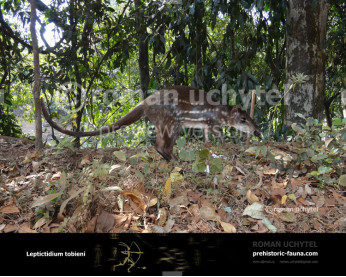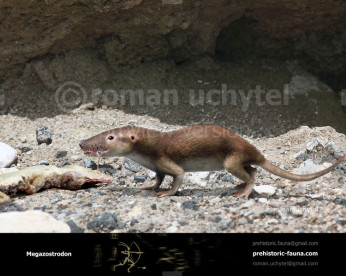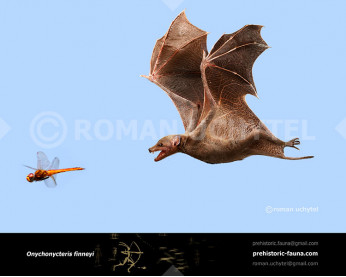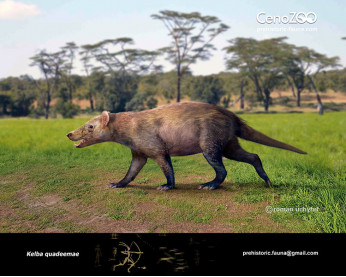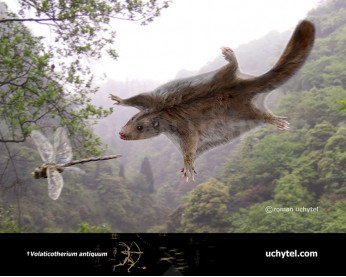Deinogalerix (Gargano giant gymnure or Gargano giant moonrat)
2840428404
Deinogalerix, Gargano giant gymnure, terrible hedgehog (†Deinogalerix (Freudenthal, 1972))
Order: Eulipotyphla
Family: Erinaceidae
Dimensions: length - 60 cm, height - 25 сm, weight - 3-5 kg
Temporal range: Late Miocene of Europe (Italy, island/peninsula of Gargano)
A largest representative: Deinogalerix koenigswaldi
Deinogalerix is an extinct genus of gymnure which lived in Italy in the Late Miocene, 7-10 million years ago. The genus is in the hedgehog subfamily of gymnures superficially rat-like relatives of the hedgehog lacking quills. The first specimens of Deinogalerix were first described in 1972.
D. koenigswaldi's skull was 21 centimetres long and the entire body measured 60 centimetres. It is believed that the species of Deinogalerix were insectivores, mostly feeding off invertebrates, but the larger species may also the same ecological niche as dogs and cats today. It shared this niche with the enormous barn owl Tyto gigantea.
The genus was apparently endemic to what was then the island of Gargano, which is now a peninsula. In the Late Miocene subepoch, what is at present Italy was mainly a group of small islands and only at a later date did majority of these join with the mainland. It is known that animals on these islands sometimes evolved quite differently from elsewhere. So it is possible that Deinogalerix may have lived exclusively in the Gargano
Payment
You may use multiple payment methods to buy image such as credit cards, PayPal and bank transfer.
Deinogalerix, Gargano giant gymnure, terrible hedgehog (†Deinogalerix (Freudenthal, 1972))
Order: Eulipotyphla
Family: Erinaceidae
Dimensions: length - 60 cm, height - 25 сm, weight - 3-5 kg
Temporal range: Late Miocene of Europe (Italy, island/peninsula of Gargano)
A largest representative: Deinogalerix koenigswaldi
Deinogalerix is an extinct genus of gymnure which lived in Italy in the Late Miocene, 7-10 million years ago. The genus is in the hedgehog subfamily of gymnures superficially rat-like relatives of the hedgehog lacking quills. The first specimens of Deinogalerix were first described in 1972.
D. koenigswaldi's skull was 21 centimetres long and the entire body measured 60 centimetres. It is believed that the species of Deinogalerix were insectivores, mostly feeding off invertebrates, but the larger species may also the same ecological niche as dogs and cats today. It shared this niche with the enormous barn owl Tyto gigantea.
The genus was apparently endemic to what was then the island of Gargano, which is now a peninsula. In the Late Miocene subepoch, what is at present Italy was mainly a group of small islands and only at a later date did majority of these join with the mainland. It is known that animals on these islands sometimes evolved quite differently from elsewhere. So it is possible that Deinogalerix may have lived exclusively in the Gargano

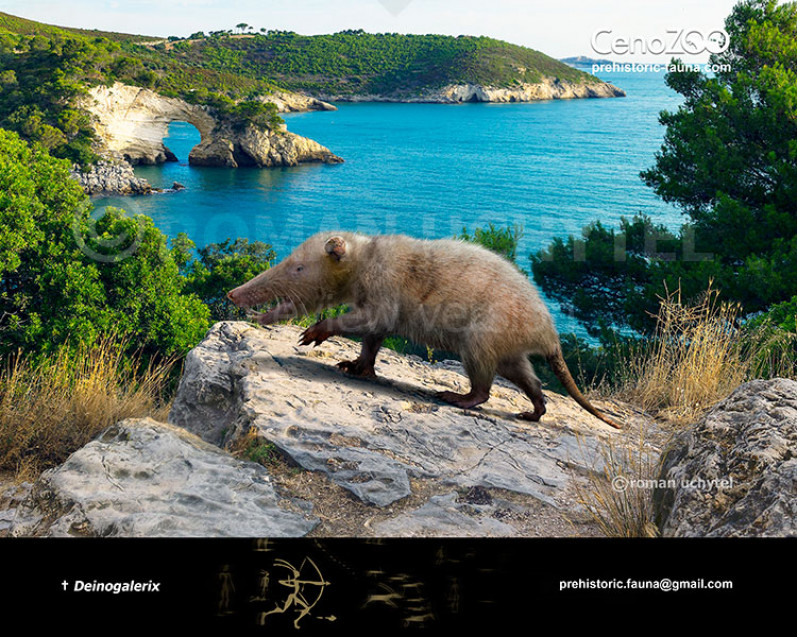
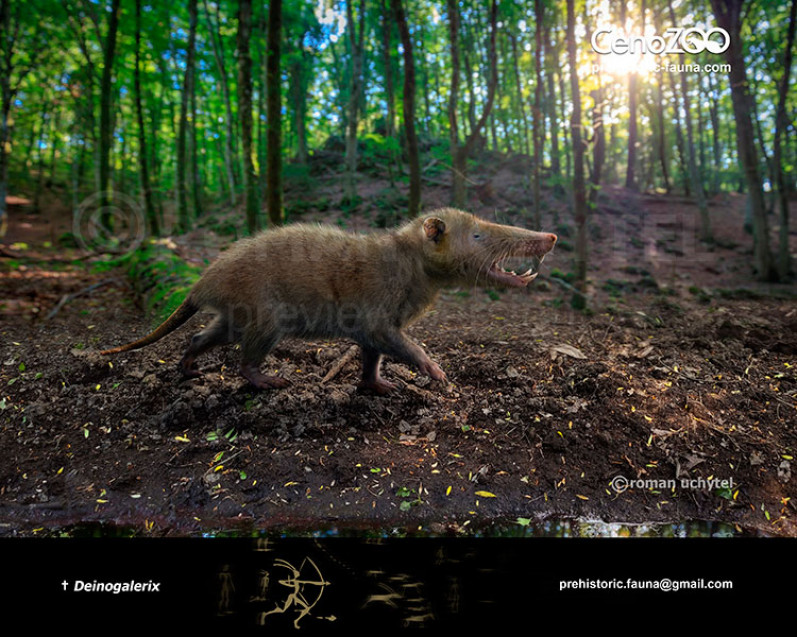
-797x638.jpg)


-70x56.jpg)
